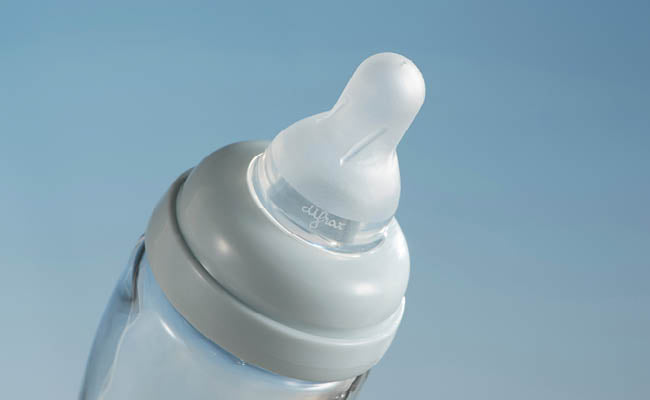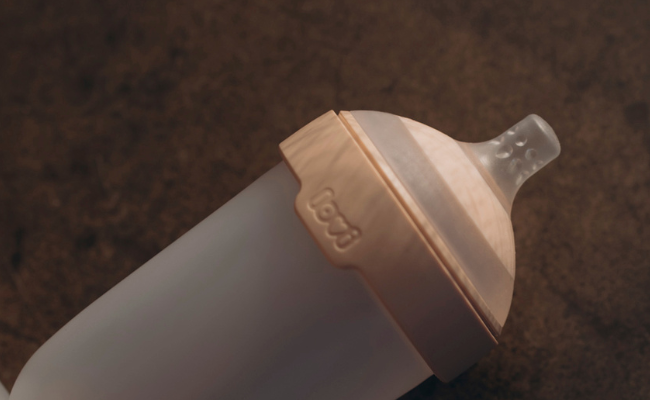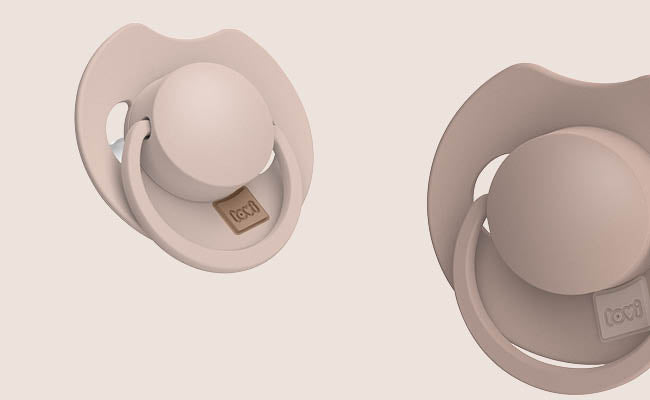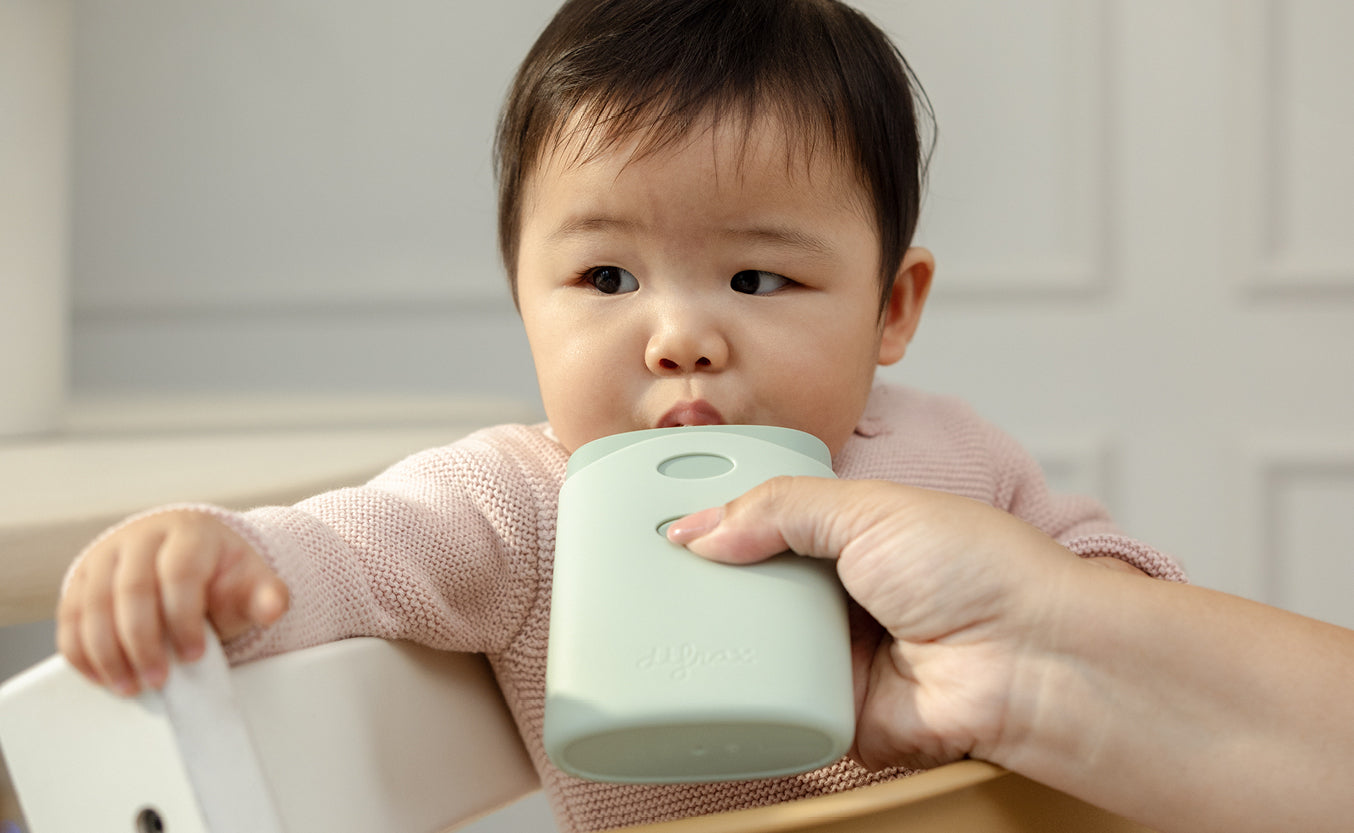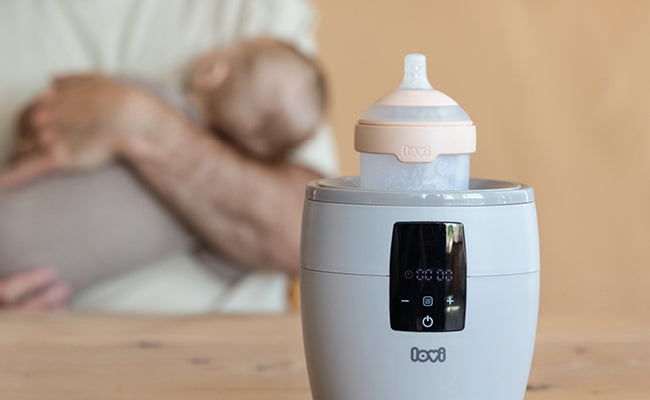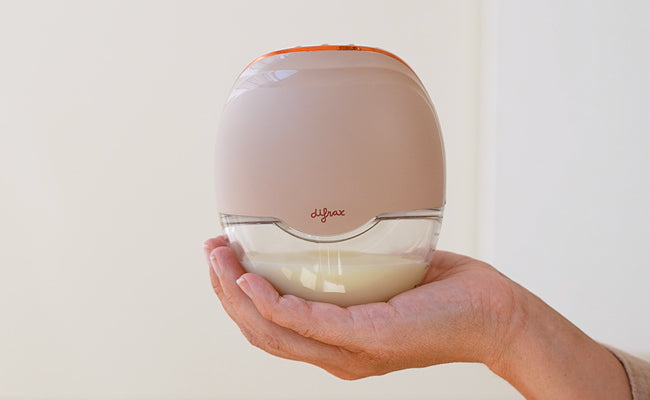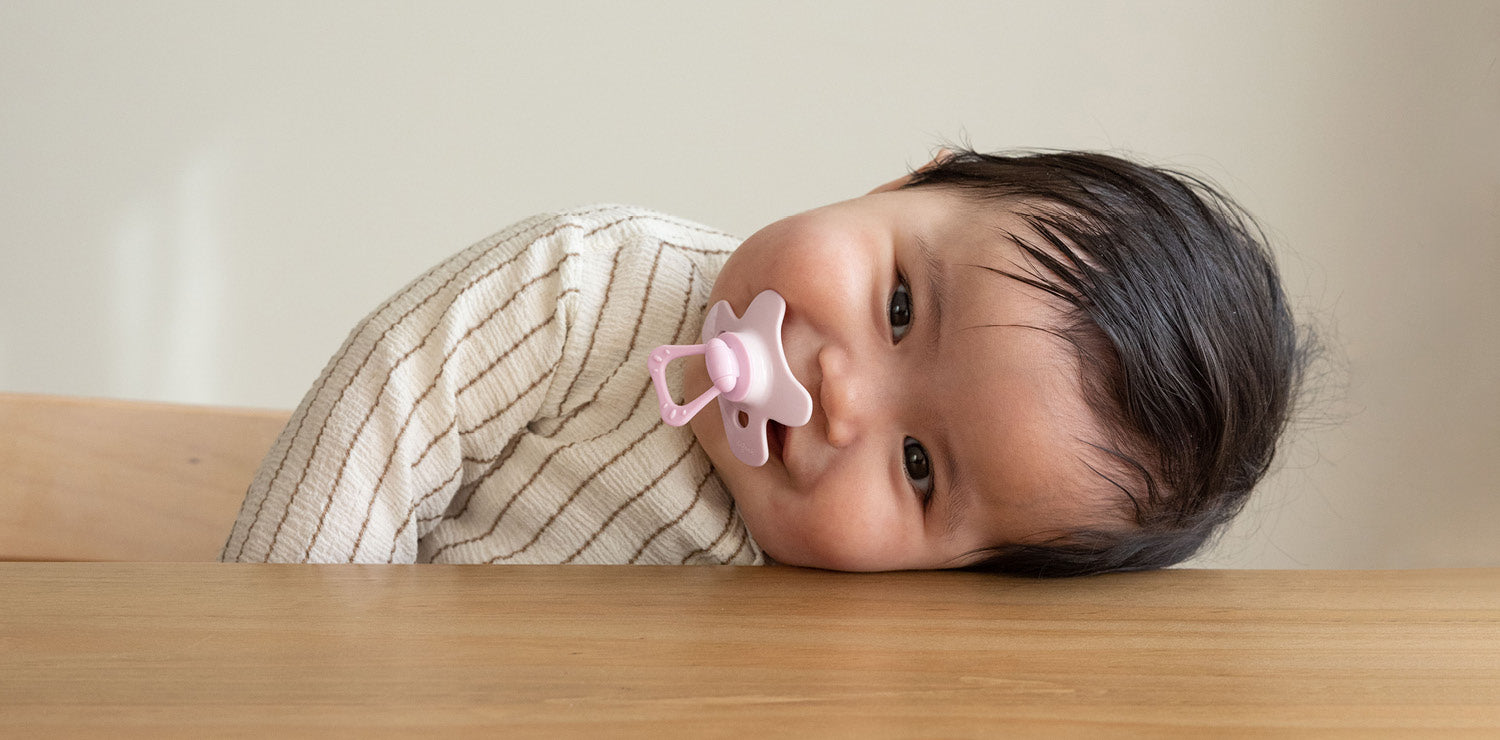
Difrax pacifier: orthodontic (Dental) or symmetric and oval (Natural)?
After a worrying article about using round, cherry-shaped pacifier, we at Difrax want to spell out the facts and answer the most frequent questions for you. Because what is an orthodontic pacifier? And how does this differ from a natural oval pacifier or the new Dynamic pacifier? We can start by reassuring you, Difrax pacifiers are different to the round shapes that the article was talking about. Pacifiers with a round teat can indeed lead to speech impediments or bite problems if used over a long period. Difrax pacifiers stimulate the natural development of the jaw and its musculature.
What is an orthodontic pacifier, and does Difrax have these too?
An orthodontic pacifier is a pacifier that is designed to provide additional stimulation for the development of the mouth's musculature. Difrax calls this the Dental pacifier. This pacifier is easily recognised because it has one rounded and one flat side, providing the baby with more grip so making it easier for him/her to keep it in their mouth. This special shape stimulates the development of the jaw and the muscles in the tongue for children who need this.

Do Difrax pacifiers also come in a round shape?
The silicone sucking part of the Natural pacifier and Dynamic pacifier has a flat base and a round and oval end. We call this symmetrical. The teat on the Difrax Dental pacifier also has a flat base, while the head of the teat has one flat side to provide the tongue with a better grip when sucking.

1 = Teat, in a natural oval shape
2 = Silicone material, long-lasting and does not get distorted by use
3 = Butterfly shield, its gently moulded shape sits snugly against the face
4 = Ring, easy to grasp.
Did you know that Difrax has also published a Dynamic pacifier? The sucking section is made up of multiple silicone layers of different thickness, and has been specially designed by doctors and speech therapists. Thanks to the unique design, the sucking section moves with your baby’s sucking rhythm. The Dynamic Pacifier prevents nipple-pacifier confusion and protects your baby’s natural sucking reflex.
Will my child get a deformed bite/jaw from using a Difrax pacifier?
No, if used properly there will not be any deformity occurring in the bite or the position of the jaw. All Difrax pacifiers are developed in collaboration with speech therapists, paediatricians and dentists. By "using properly" we mean:
- Choosing the correct size for your baby.
- Use a pacifier only for the baby's natural sucking reflex and do not get into the habit of leaving him or her sucking on a pacifier for too long or too often.
- Wean the child off the pacifier in good time.
What is the difference between Difrax Natural, Dental and Dental pacifier?
Click here for information about the differences between the Difrax Natural and Dental pacifier.
How long should my child use a pacifier?
The best thing is to use a pacifier only up to the point where the teeth start to form. For most children this is between age 1 and 2. Useful to know! A baby's natural sucking reflex starts to weaken from about 6 months.
Is it normal for a teat to become misshapen?
Pacifiers with teats made from natural rubber will get misshapen in use. Natural rubber pacifiers therefore need to be replaced more often. Pacifiers with a silicone teat do not distort. Silicon is also tougher than rubber and gets scratched less often. Difrax uses only high-quality silicones for its pacifiers, never rubber.
![]()
A = Round pacifier, B = Oval Difrax pacifier
Does the shape of the shield make any difference?
Yes, the shape of the shield must not dig into the skin or cover up too much of the face. It is important for the pacifier to sit on the face to give a natural effect. Pacifiers that sit away from the face make your child suck unnaturally hard. But it is also important that their nose is kept clear. Especially while your child is very young. This means your child can breathe easily. All Difrax pacifiers have an iconic butterfly shape, available in five different sizes. There is the right shield for every age, preventing skin irritation and helping easy breathing through the nose.

Do I need to swap to a Dental pacifier now?
Not if your child is happy with the Difrax Natural pacifier, there is no need. Both pacifiers have a symmetrical oval teat. The base of the teat is flat. This means that the pacifier fits naturally in the mouth without distorting any of the muscles around the mouth. The high-quality silicone prevents the teat getting deformed during use. The Natural pacifier is safe. Every child has its own preferred type of pacifier and both types are equally reliable.
Can my child breathe easily through his/her nose with a Difrax pacifier? (Lisping is often linked to round pacifiers. Children breath through their mouths because of round pacifiers)
Breathing properly while sucking a pacifier is very important. Not being able to breathe properly can mean that children get problems like lisping. All Difrax pacifiers have the iconic butterfly shape, which is shaped to leave the child's nose uncovered, and they are available in five different sizes. There is the right shield for every age, preventing skin irritation and helping easy breathing through the nose.

Isn't the oval shape of the teat on the Difrax pacifier too big?
No, the teats on all Difrax pacifiers are designed to suit your child's age and needs. The size and the needs were defined jointly with a medical team.
What are the benefits of a Difrax pacifier?
Read our blog to learn all about the benefits of Difrax pacifiers.



